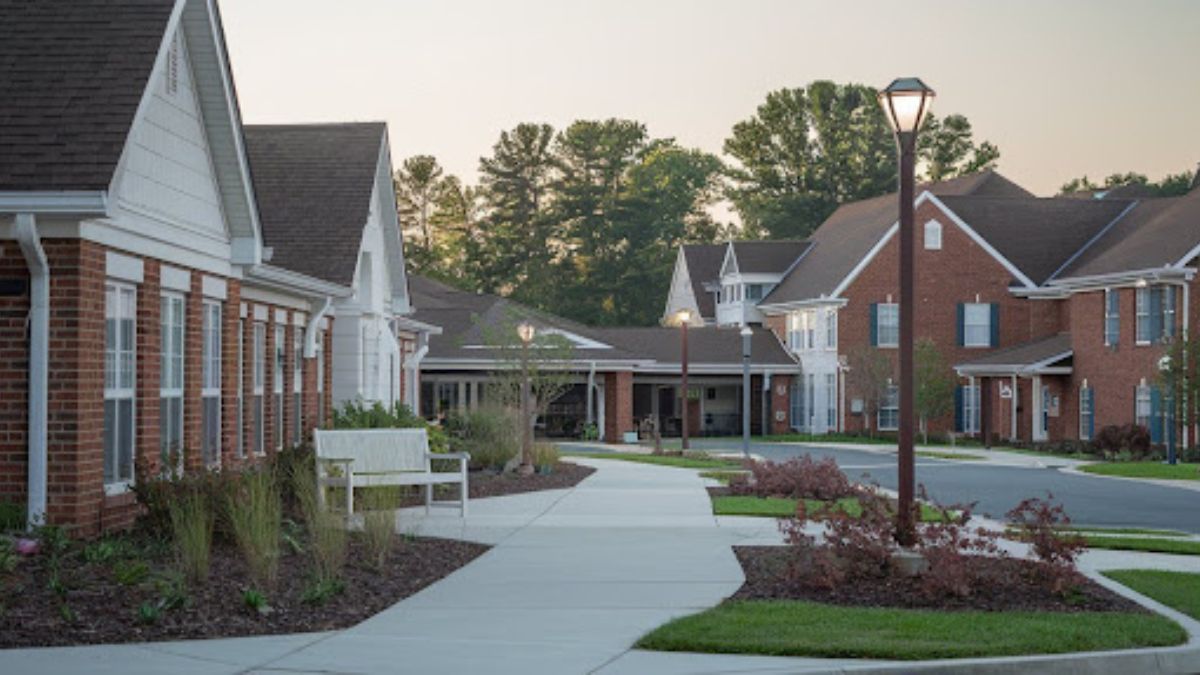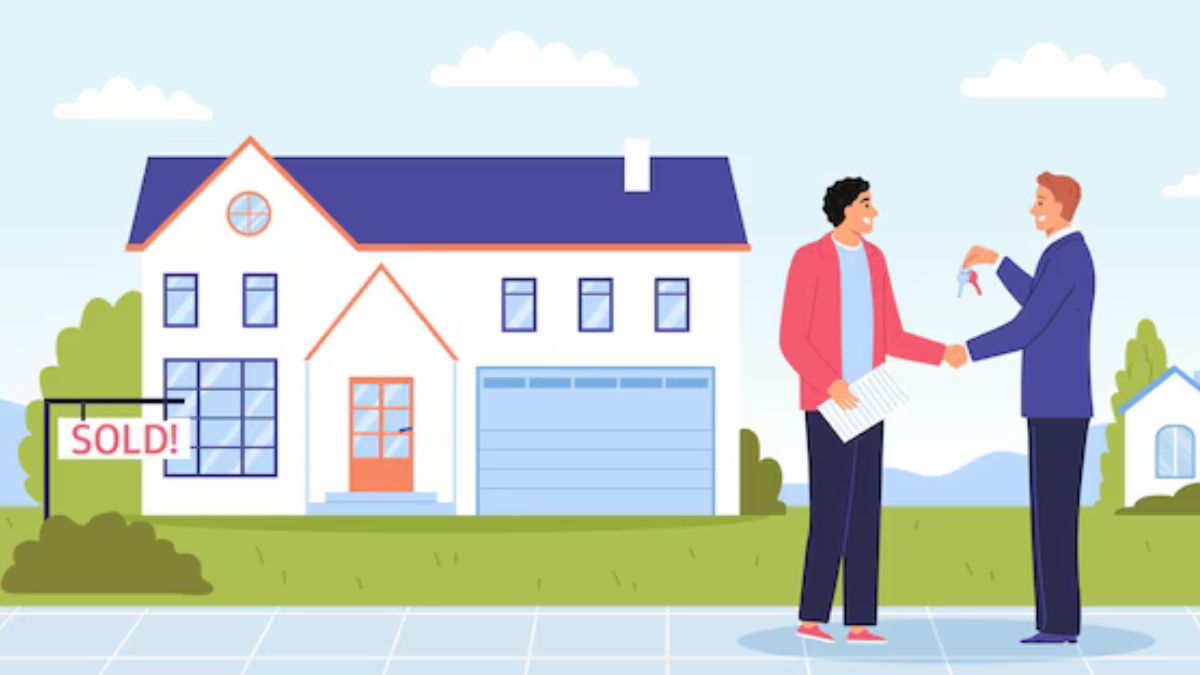REAL ESTATE
When Should You Move into an Assisted Living Facility?

The decision as to when to move to an assisted living facility is always a personal and sometimes agonizing choice for both individuals and their families. In order to enjoy a better quality of life, get assistance in needed areas, and be as independent as possible, the timing of the move is crucial.
There may be factors that indicate it’s time to seek out assisted living. Understanding such factors can help individuals and families make a thoughtful, informed decision. This guide explores the right time to consider assisted living, signs that may mean it is necessary and the benefits of making this transition
Knowing the Right Time to Consider Assisted Living
There is no one-time universal answer of when one should be transferred to an assisted living facility, as everybody has different needs, lifestyles, and situations that determine when it should be done. The determination of whether or not a person should move usually has to do with safety, health, and quality of life.
Assisted living tends to fall between independent living and higher-level care in facilities, such as nursing homes, where there’s a lot of help, but they still have considerable independence. Most of the time, it is best to consider assisted living once your daily tasks or home maintenance becomes too much or if health issues begin to affect one’s independence in living.
Planning for assisted living beforehand can prevent people from having to make hasty decisions and thus, a transition can be easier.
Indicators It’s Time for Assisted Living
Certain signs indicate a person may benefit from the services and support of an assisted living community. Recognizing them early can make all the difference in a person’s experience, as they are less stressed when settling into a new environment. The following are key signs to look for:
1. Problems managing daily tasks
Struggling with simple ADLs would include cooking, cleaning, or taking a bath. Assisted living community takes care of all such ADLs, such as dressing and personal hygiene and meal preparation. Since this care provides an opportunity to pass more time living, rather than time spent on chores.
2. Decline in Personal Hygiene
This could be due to physical incapacitation or mental issues when a resident begins to neglect personal hygiene. A client who looks unkempt, has not bathed for days, or has worn the same clothes for days is guaranteed to need more help. Assisted living staff are trained to provide dignified personal care of the residents, so they feel clean and comfortable.
3. Mobility and Balance Issues
Falls or mobility issues can pose a severe risk, particularly to older adults. Assisted living communities provide the support needed for mobility, including handrails, ramps, and other specialized equipment. They also have staff trained to assist with mobility, thus lowering the incidence of falls and injuries.
4. Social Isolation and Loneliness
Aging may signify the loss of friends, declining physical ability, or losing other mobility, which may cause elders to lose their social networks, making them lonely and resulting in depression. An assisted living facility is a built-in community where there are ample chances for social interaction in day-to-day life. Planned and regular activities, group outings, and communal dining allow people to engage themselves more socially, which may lessen loneliness.
5. Dementia
Mild cognitive decline comprises forgetfulness or an inability to focus, making it unbearable for a person to perform his or her affairs with ease. Assisted living facilities provide memory care services to those people experiencing an early stage of dementia and Alzheimer’s disease. They offer a safe environment whereby the needs of such a person can be satisfied accordingly.
Emotional and Social Benefits of Assisted Living
The decision to move into assisted living is a bit of a physical choice but a lot of emotional one in terms of your quality of life. A great deal of people find that becoming part of an assisted living community offers opportunities for socializing, intellectual stimulation, and personal growth. Some emotional and social benefits are given below:
1. Greater Social Opportunities
Loneliness is an issue that has effects on mental health, particularly for the elderly. Assisted living facilities provide a community atmosphere where residents can socialize with others of the same interests, engage in group activities, and make friends. Structured social activities and daily interactions make them feel like they belong.
2. Availability of Enrichment Programs
Most residential assisted living offers some type of enrichment program, which can be art classes, book clubs, gardening, or even exercise classes. These will keep residents engaged mentally, and it does give a sense of accomplishment and purpose, which they may see as an enhancement to their outlook on life.
3. Reduced Caregiver Stress
Older adult relatives might be challenging both to care for and to care about. Transitioning to an assisted living community enables family members to change their attention from body care to quality time. Relieving the stress that a family may have could be due to the fact that they know their loved one is safe and well taken care of, which thus enhances their well-being too.
Conclusion
There are a lot of things with regard to well-being physically, emotionally, and socially when deciding to relocate to assisted living. This makes one recognize that it’s time for assisted living in a proactive rather than an impulsive or stressful sense. Assisted living homes allow one to live daily, supported by a community of love, stimulating programs, and an environment that promotes dignity and independence. Knowing its advantages and the right time assists one and one’s family in moving towards more fulfilled and balanced life experiences.
REAL ESTATE
The Step-by-Step Process of Working with a Real Estate Agent

Introduction to Real Estate Agents
Purchasing or selling real estate is a significant financial and emotional choice that has to be well thought out. With fluctuating market conditions and numerous legal considerations, having the right support is essential. Whether you are buying or selling a house, navigating the real estate market can be intimidating. Engaging the services of a professional, such as a Morehead City NC real estate agent Linda Rike, can alleviate stress and provide expert guidance through the complex process. Real estate agents are invaluable in understanding market trends, providing local insights, and ensuring transactions proceed smoothly. In today’s dynamic market, a real estate agent’s role extends beyond just facilitating transactions; they serve as strategic advisors, negotiators, and intermediaries, helping clients achieve their real estate goals effectively. Thus, knowing the step-by-step process of working with an agent is crucial for anyone entering the property market.
Choosing the Right Real Estate Agent
The process’s first and most crucial stage is choosing the correct real estate agent. Not all agents are created equal, and selecting one who understands your needs, budget, and timeline is paramount. Research potential agents by reviewing their experiences, specialties, track records, and client testimonials. Word-of-mouth referrals can also be invaluable, offering insights into their reputation and effectiveness.
The Initial Meeting
The tone of your connection with your real estate agent is established during your first encounter. This is where expectations are established, and preferences are discussed. The agent will typically ask questions about your property goals, including budget, desired locations, and must-have features if buying. If selling, they might discuss comparable market analyses and set reasonable expectations for your property’s market value.
Home Search Process
Once your agent understands your needs, the home search process is next. Utilizing their industry knowledge and resources, the agent curates a list of properties that align with your criteria. This tailored approach saves time by focusing on homes that meet your requirements. Agents also frequently have access to properties that might not be made public, which gives you an advantage over other buyers.
Buying or Selling Process
The buying or selling process is a critical phase where the agent’s expertise shines. For buyers, an agent will help prepare and present offers, negotiate terms, and manage counteroffers, often explaining the intricacies to ensure you make informed decisions. For sellers, agents assist with staging advice, marketing strategies, and responding to buyer inquiries, all aimed at optimizing the property’s appeal.
Closing the Deal
Multiple procedures are involved in closing a real estate transaction, and accuracy and focus on detail are essential. Your agent will coordinate inspections, handle necessary paperwork, and assist with any hurdles that might delay closing. They act as a liaison between you, the other party, and any involved attorneys or loan officers, ensuring all documentation is in order and deadlines are met. This detailed coordination minimizes risks and errors during the critical closing phase.
Post-Transaction Relationship
After the deal is closed, a good real estate agent continues providing value, maintaining a relationship beyond the transaction. They remain a resource for your real estate queries, market updates, and potential future transactions. This ongoing partnership can be beneficial for future property investments or home improvements. Additionally, they appreciate referrals, and recommending their services can help establish a trustworthy realtor-client network.
REAL ESTATE
Homerocketrealtyy.com/ Makes Real Estate Easy

The real estate market is complex and may be difficult to navigate for both buyers and sellers. It may be difficult to navigate the procedure without the proper assistance, what with dealing with endless listings and all. Luckily, Homerocketrealtyy.com/ revolutionizes the real estate industry by providing cutting-edge materials that simplify the entire process.
Whether you’re selling your property or purchasing your ideal home, Homerocketrealtyy.com/ makes sure it’s easy, transparent, and quick. The platform is changing the game for real estate transactions in these ways.
Simplifying Real Estate for Buyers
1. Access to Tailored Property Listings
Sorting among unrelated homes is a major headache for purchasers. Thanks to their personalized search options, Homerocketrealtyy.com/ puts an end to this annoyance. The software will compile a unique list of houses that match your criteria once you enter your choices, such as price range, desired neighborhood, and amenities.
2. Advanced Search Features
With additional features like neighborhood insights, school district rankings, and commute estimates, Homerocketrealtyy.com/ goes above and beyond simple filtering choices. Virtual tours, high-resolution photographs, and extensive descriptions help buyers make educated judgments.
3. Transparent Market Insights
The days of making educated guesses about property prices or paying too much for a home are past. You may get up-to-the-minute market statistics on Homerocketrealtyy.com, such as average price trends, comparisons of recent sales, and neighborhood projections. With this information, purchasers may make well-informed, competitive bids.
4. Dedicated Support From Experts
Real estate agents are available to answer questions, give tours, and walk you through the buying process on Homerocketrealtyy.com, in contrast to other platforms that depend entirely on automated processes. Help from industry experts is at your fingertips, whether you’re an experienced investor or a first-time purchase.
Helping Sellers Maximize Their Property Value
1. Comprehensive Property Valuations
In the current competitive market, setting the correct selling price is of the utmost importance. Thanks to cutting-edge algorithms and local market data, Homerocketrealtyy.com/ provides sellers with instantaneous home appraisals. With these resources, you can set a fair price for your house that will bring in buyers and make a profit.
2. Enhanced Listing Visibility
By showcasing homes on prominent real estate platforms and social media channels, Homerocketrealtyy.com/ employs innovative marketing tactics, which in turn benefits sellers by increasing visibility. Beautiful property ads that include high-quality photos and informative descriptions are more likely to attract serious purchasers.
3. Seamless Communication
With the platform’s integrated messaging system, vendors may have direct conversations with agents and prospective purchasers. Simplify the selling process by responding to queries, scheduling showings, and negotiating offers all in one spot.
4. Guidance Every Step of the Way
Preparing your house for showings and handling complicated paperwork are just two of the many steps involved in selling a home. Dedicated real estate agents at Homerocketrealtyy.com/ can guide you through each step of the process while keeping you in full compliance with all applicable laws.
Why Choose Homerocketrealtyy.com/?
1. User-Friendly Design
A focus on ease of use was key to the design of homerocketrealtyy.com. Anyone may browse features, ask questions, and monitor progress; technical knowledge is not a need. The user-friendly interface guarantees that everyone will have a smooth experience.
2. Cutting-Edge Technology
Using cutting-edge real estate technology, such as interactive virtual tours and AI-driven property suggestions, Homerocketrealtyy.com/ remains ahead of the curve. Users have access to essential tools and experience unprecedented ease thanks to these improvements.
3. A Platform Built on Trust
At Homerocketrealtyy.com, we value transparency highly. In order to maintain trust, all agents and experts undergo extensive screening. Homeowners may rest easy knowing their properties are being handled by competent individuals, while users can easily use the platform.
4. A Growing Community of Real Estate Enthusiasts
Beyond being just a platform, Homerocketrealtyy.com/ is a community where users can interact with others going through the same real estate adventures as them, share advice, and ask questions. This helpful network enhances your experience whether you’re seeking a contractor or mortgage counsel.
How to Get Started With Homerocketrealtyy.com/
There is no learning curve! Follow these steps to maximize your real estate experience on Homerocketrealtyy.com:
- Set Up Your Account: It doesn’t cost anything to sign up. When you sign up, you’ll have access to all our site has to offer.
- Peruse Listings or Post Your Own Property: You may begin browsing listings or inputting property data immediately, regardless of whether you are buying or selling.
- Bring in the Pros: Get in touch with qualified real estate agents who are standing by to help you through virtual tours, consultations, or live chats.
- Relax and Take It Easy: You may rest easy knowing that you can monitor the whole selling or buy procedure.
Empower Your Real Estate Journey Today
For both sellers and buyers, Homerocketrealtyy.com/ has revolutionized the real estate industry. What this platform offers in terms of user-friendly features, professional advice, and outstanding customer service makes it the gold standard in digital real estate.
With Homerocketrealtyy.com, your real estate dreams may come true, whether you’re a buyer looking for your perfect house or a seller trying to get the most out of your property.
Do you feel prepared to move forward? Find out how simple real estate can be by visiting Homerocketrealtyy.com/ today!
REAL ESTATE
Navigating the World of Luxury Real Estate: Tips From Top Agents

Successfully navigating luxury real estate requires market knowledge, strategic planning, and expert guidance. Top agents emphasize understanding high-end market trends, building strong networks, and prioritizing client relationships. Buyers should focus on location, long-term value, and exclusive property features, while sellers benefit from tailored marketing strategies. Negotiation skills and discretion play key roles in securing the best deals. Working with a seasoned luxury real estate agent in this cutthroat market guarantees seamless transactions and access to exclusive prospects.
Introduction
Making informed decisions is paramount in luxury real estate’s intricate and exclusive world. These high-stakes transactions require insights from luxury real estate agents in Temecula who are expertly versed in the nuances of this dynamic market. Achieving real estate objectives, whether as a buyer, seller, or agent, requires an understanding of the particular dynamics of the industry. The sector is known for its exclusivity, sophistication, and unique experiences, making the expertise of seasoned experts essential. Luxury homes, known for their architectural elegance, cater to a specific market seeking lifestyle improvements. In addition to tactics from professionals who handle high-value transactions with care and finesse, this article offers professional views and helpful advice to help negotiate the complexity of luxury real estate.
Understanding the Luxury Real Estate Market
Luxury properties distinguish themselves with features beyond conventional standards, offering high-end, personalized amenities that make them a rare find. They are often located in prime areas with magnificent vistas and are equipped with advanced technology, bespoke designs, and unparalleled views. The luxury market is a global phenomenon influenced by dynamic economic factors and international investments. For instance, fluctuating currency rates can make properties more desirable to foreign investors when conditions align, driving demand and property value. According to Forbes, the global appetite for luxury real estate remains robust, propelled by a blend of investment appeal and lifestyle aspirations, leading to a vibrant and resilient market.
What Sets Luxury Real Estate Agents Apart?
What makes luxury real estate agents uniquely suited for their role? They stand out with refined negotiation skills, comprehensive market knowledge, and the ability to maintain discretion, traits crucial for handling elite transactions. Their expertise shines in their ability to cater to affluent clients, matching homes with precise buyer expectations. Additionally, they manage transactions with confidentiality, which builds trust and long-term relationships. These agents often act as lifestyle consultants, understanding clients’ refined tastes and aligning them with properties that reflect their brand and status.
Buyer Considerations in Luxury Real Estate
Purchasing a luxury property involves many considerations beyond square footage and price. Prospective buyers should meticulously evaluate the property’s exclusive location, architectural uniqueness, and investment potential. Aspects such as proximity to cultural hubs, waterfront views, privacy, and bespoke amenities play crucial roles in decision-making. It’s also essential to consider the home’s potential for customization to fit a buyer’s lifestyle and future needs. Evaluating these elements ensures that the property satisfies immediate desires and appreciates in value, providing a solid return on an impressive investment.
Seller Strategies in the Luxury Market
For sellers, effectively showcasing a property’s luxury elements is essential. This involves more than mere listing; it requires a carefully crafted narrative highlighting the home’s unique features and lifestyle opportunities. Engaging professional photography, staging, and leveraging a strong digital presence can significantly influence a potential buyer’s perception. High-quality images and virtual tours highlighting the home’s best features—from awe-inspiring interiors to enchanting outdoor spaces—can be pivotal in attracting discerning buyers. Implementing strategic marketing approaches ensures that the property is presented as an exclusive opportunity, appreciated by buyers worldwide.
Technology’s Place in Luxury Real Estate
Technology has profoundly enhanced how luxury properties are marketed and sold, introducing innovative tools that elevate the buying and selling experience. Virtual tours, 3D modeling, and AI-driven marketing strategies have revolutionized property presentations, allowing potential buyers to explore homes from around the globe. The BBC highlights how innovative tech tools enhance buyer experiences and streamline the transaction process, making interactions more efficient and immersive. These advancements ensure that the luxury real estate market remains at the forefront of innovation, accommodating an increasingly tech-savvy clientele.
Legal and Financial Nuances
Luxury real estate transactions entail complex legal and financial layers that require expert navigation. Engaging seasoned legal experts and financial advisors is imperative to ensuring compliance with local and international regulations and optimizing financial structuring. These professionals navigate zoning regulations, tax considerations, and estate planning, safeguarding buyer and seller interests throughout the transaction. They provide vital insights into managing luxury estates, addressing concerns from property rights to cross-border transactions, and ensuring peace of mind for involved parties.
Resources and Tools for Aspiring Luxury Agents
Aspiring luxury real estate agents can significantly benefit from pursuing specialized certifications and continuous education focused on real estate trends and luxury market dynamics. Networking within the elite real estate community affords invaluable mentorship opportunities and peer collaborations. Attending industry events, engaging in professional organizations, and forging alliances with other luxury market specialists provide insights and open doors to thriving in this competitive market, equipping agents with the necessary skills and connections to succeed.
-

 TOPIC5 months ago
TOPIC5 months ago7 Expert Tips For Choosing The Best Basement Renovation Companies
-

 BUSINESS1 week ago
BUSINESS1 week agoTop 5 Features of Sowix Online That Every User Should Know About
-

 TOPIC2 weeks ago
TOPIC2 weeks agoGreece Katz Martian: A Cultural Exploration of an Intriguing Figure
-

 TOPIC1 month ago
TOPIC1 month agoTop Features of BetterThisWorld .com You Need to Know About
-

 FINANCE2 months ago
FINANCE2 months agoHow TraceLoans Can Simplify Your Finances
-

 BIOGRAPHY2 months ago
BIOGRAPHY2 months agoFrom Reality Star to Business Mogul: Prince Narula Digital PayPal
-

 TOPIC3 months ago
TOPIC3 months agoExploring Sifangds: The Hidden Gem of Modern Design
-

 TOPIC2 weeks ago
TOPIC2 weeks agoKashito_Toto Explained: What You Should Know in 2024
